Overview of the Toolbox
Organization of This Manual
Working with the Toolbox
Command Line Display
The Data Structures
SYSTEM Matrices
VARYING Matrices
CONSTANT Matrices
Acknowledgments
Accessing Parts of Matrices
Interconnecting Matrices
Plotting VARYING Matrices
VARYING Matrix Functions
More Sophisticated SYSTEM Functions
Frequency Domain Functions
Time Domain Functions
Signal Processing and Identification
Interconnection of SYSTEM Matrices: sysic
Variable Descriptions
Running sysic
HIMAT Design Example
H• Control and Model Reduction
Optimal Feedback Control
Performance as Generalized Disturbance Rejection
Norms of Signals and Systems
Using Weighted Norms to Characterize Performance
Interconnection with Typical MIMO Performance Objectives
Commands to Calculate the H2 and H• Norm
H2 norm
H• norm
Discrete-Time H• Norm
Commands to Design H• Output Feedback Controllers
H• Design Example
H• Optimal Control Theory
Historical Perspective
Notation
Problem Statement
Preliminaries
The Riccati Operator
Computing the H• Norm
H• Full Information and Full Control Problems
Problem FI: Full Information
Problem FC: Full Control
H• Output Feedback
Disturbance Feedforward and Output Estimation
Converting Output Feedback to Output Estimation
Relaxing Assumptions A1–A4
Discrete-Time and Sampled-Data H• Control
Discrete-Time Systems
Sampled-Data Systems
Discrete-Time and Sampled-Data Example
Loop Shaping Using H• Synthesis
Model Reduction
References
Modeling and Analysis of Uncertain Systems
Representing Uncertainty
Linear Fractional Transformations (LFTs)
Parametric Uncertainty
m-Tools Commands for LFTs
Interconnections of LFTs
Parameter Uncertainty in Transfer Functions
Linear State-Space Uncertainty
Unmodeled Dynamics
Mixed Uncertainty
Analyzing the Effect of LFT Uncertainty
Using m to Analyze Robust Stability
Using m to Analyze Robust Performance
Using m to Analyze Worst-Case Performance
Summary
Structured Singular Value Theory
Complex Structured Singular Value
Definitions
Bounds
Computational Exercise with the mu Command
Mixed Real/Complex Structured Singular Value
Specifics About Using the mu Command with Mixed Perturbations
Computational Exercise with the mu Command — Mixed Perturbations
Linear Fractional Transformations
Well Posedness and Performance for Constant LFTs
Frequency Domain m Review
Robust Stability
Robust Performance
Real vs. Complex Parameters
Block Structures with All Real Blocks
Generalized m
Using the mu Software
References
Control Design via m Synthesis
Problem Setting
Replacing m With Its Upper Bound
D-K Iteration: Holding D Fixed
D-K Iteration: Holding K Fixed
Two-Step Procedure for Scalar Entries d of D
Two-Step Procedure for Full D (Optional Reading)
Commands for D – K Iteration
Discussion
Reference
Auto-Fit for Scalings (Optional Reading)
Graphical User Interface Tools
Workspace User Interface Tool: wsgui
File Menu
Options Menu
Export Button
Spinning Satellite Example: Problem Statement
D-K Iteration User Interface Tool: dkitgui
Drop Box Data
Completing Problem Setup
D-K Iteration Parameters Window
D-K Iteration
Options Menu
LFT Time Simulation User Interface Tool: simgui
Spinning Satellite Example: Time Simulation
Setting Up simgui
Plots and Line Types Scroll Table
Plotting Window Setup and Titles
Printing Menu
Loading and Saving Plot Information
Simulation Type
Simulation Parameter Window
Dragging and Dropping Icons
Robust Control Examples
SISO Gain and Phase Margins
MIMO Loop-at-a-Time Margins
Analysis of Controllers for an Unstable System
Redesign Controllers Using D – K Iteration
MIMO Margins Using m
Loop-at-a-Time Robustness
Constructing Destabilizing Perturbations
Space Shuttle Robustness Analysis
Aircraft Model: Rigid-Body
Aircraft Model: Aerodynamic Uncertainty
Actuator Models
Exogenous Disturbances, Noises, and Commands
Errors
LFT Aero-Coefficient Uncertainty
Create Open-Loop Interconnection
Controllers
Nominal Frequency Responses
Robust Stability
Robust Performance
Worst-case Perturbations
Time Simulations
Conclusions
Space Shuttle References
Shuttle Rigid Body Model
HIMAT Robust Performance Design Example
HIMAT Vehicle Model and Control Objectives
Closed-Loop Feedback Structure
Uncertainty Models
Specifications of Closed-Loop Performance
Building the Open-Loop Interconnection
m-synthesis and D – K Iteration
Loop Shaping Control Design
H• Design on the Open-Loop Interconnection
Assessing Robust Performance with m
m Analysis of H• Design
m-Analysis of Loop Shape Design
Recapping Results
D – K Iteration for HIMAT Using dkit
H• Loop Shaping Design for HIMAT
H• Loop Shaping Feedback Compensator Design
Assessing Robust Performance with m
Reduced Order Designs
Introducing a Reference Signal
HIMAT References
F–14 Lateral-Directional Control Design
Nominal Model and Uncertainty Models
Controller Design
Analysis of the Controllers
A Process Control Example: Two Tank System
Experimental Description
An Idealized Nonlinear Model
Normalization Units
Operating Range
Actuator Model
Experimental Assessment of the Model
Developing the Interconnection Model for Design
Linearized Nominal Model
Perturbation Model
Sensor Noise Weights
Specifying the Design Requirements
Controller Design and Analysis
Design Issues
Closed-Loop Analysis
Experimental Evaluation
Two Tank System References
Summary of Commands
Commands Grouped by Function
Reference
abv, daug, sbs
blknorm
cjt, transp, vcjt, vtp
cmmusyn
cos_tr, sin_tr, step_tr
crand, crandn, sysrand, varyrand
csord
dhfnorm
dhfsyn
dkit
dkitgui
drawmag
dypert, sisorat
fitmag, genphase, fitmaglp, magfit
fitsys
frsp
gap, nugap
genmu
getiv, sortiv, tackon
h2norm, hinfnorm
h2syn
hinffi
hinfsyn
hinfsyne
indvcmp
madd, msub
massign
mfilter
minfo
minv, vinv
mmult
mprintf
msf, msfbatch
mscl, sclin, sclout
mu, muunwrap, randel, unwrapd, unwrapp
musynfit, musynflp, muftbtch
ncfsyn, cf2sys, emargin
nd2sys, zp2sys
negangle
pck, pss2sys, sys2pss, unpck
pkvnorm, vnorm
ric_eig
ric_schr
rifd
samhld
scliv
sdhfnorm
sdhfsyn
see, seeiv
seesys
sel, reordsys
siggen
simgui
spoles
srelbal, sfrwtbal, sfrwtbld, sncfbal, sdecomp
sresid, strunc
starp
statecc, strans
sysbal, hankmr
sysic
szeros
trsp, dtrsp, sdtrsp
tustin
unum, xnum, ynum
vabs, vimag, vreal, vfloor, vceil
vdet, vdiag, vexpm, vrcond
vebe
veig
veval
vfft, vifft, vspect
vfind
vinterp, vdcmate
vldiv, vpinv, vrdiv
vpck, vunpck, var2con
vplot
vpoly, vroots
vsvd, vrho, vschur
vzoom
wsgui
wcperf
xtract, xtracti
Index


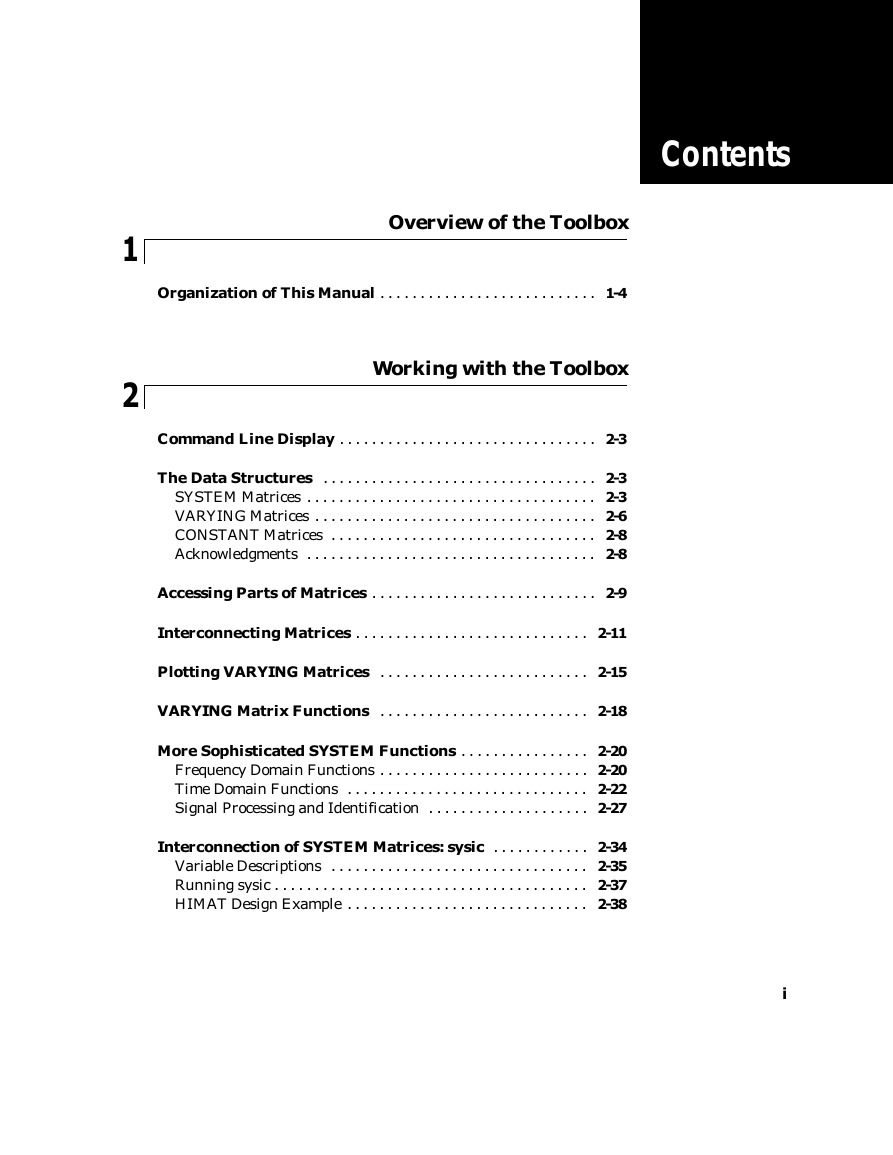
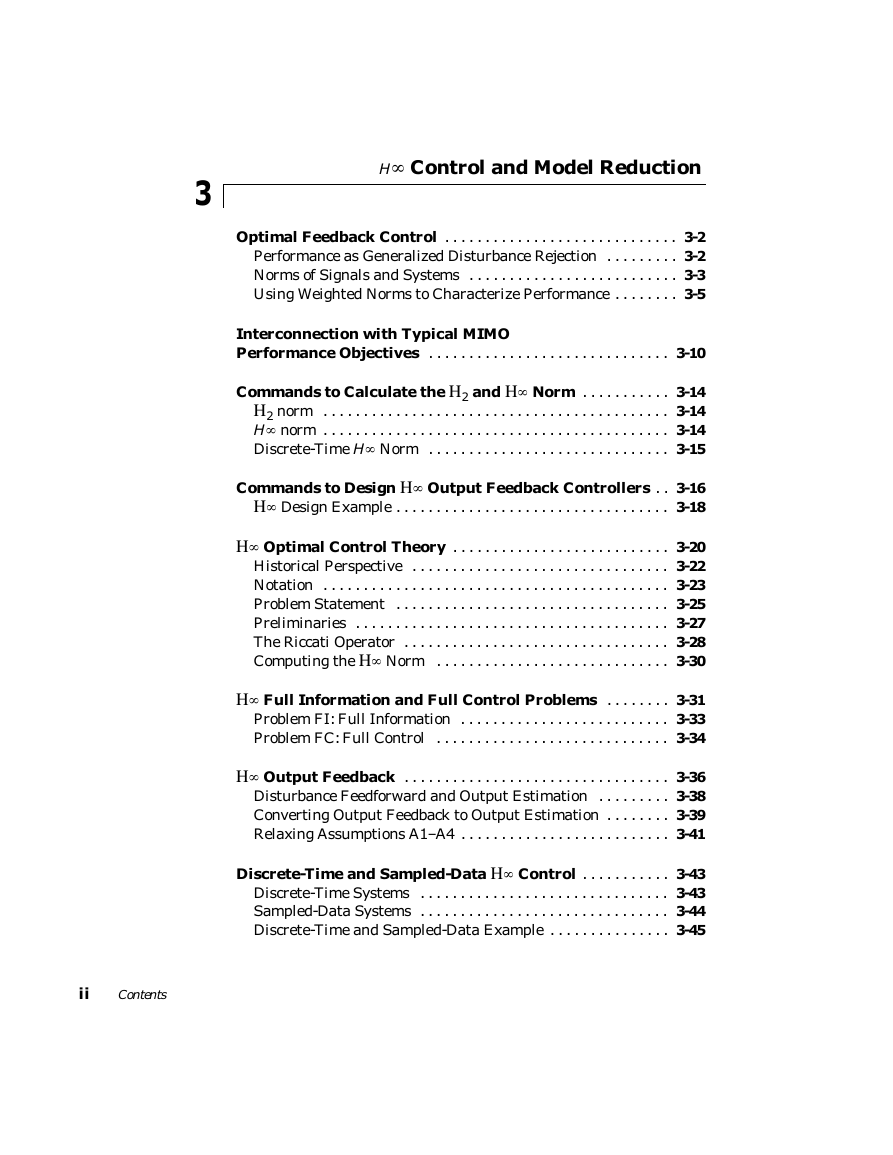
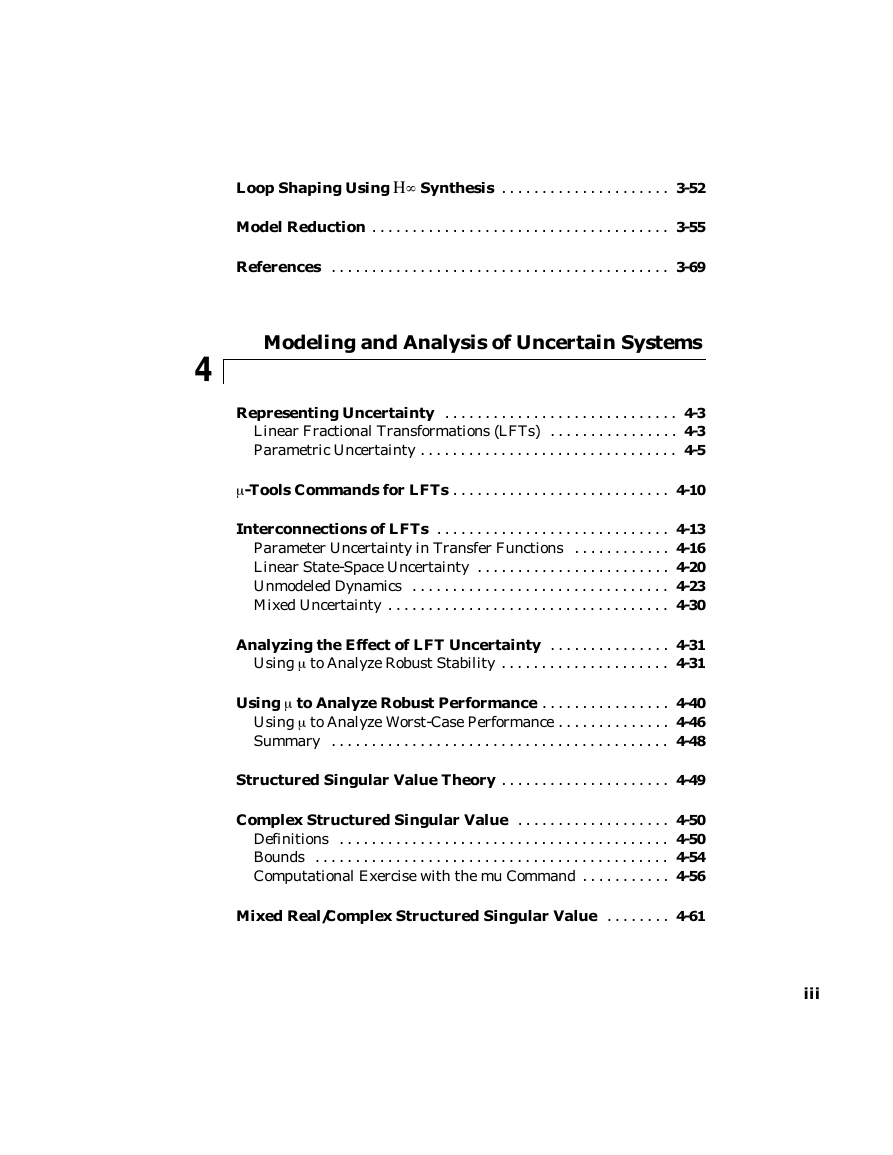
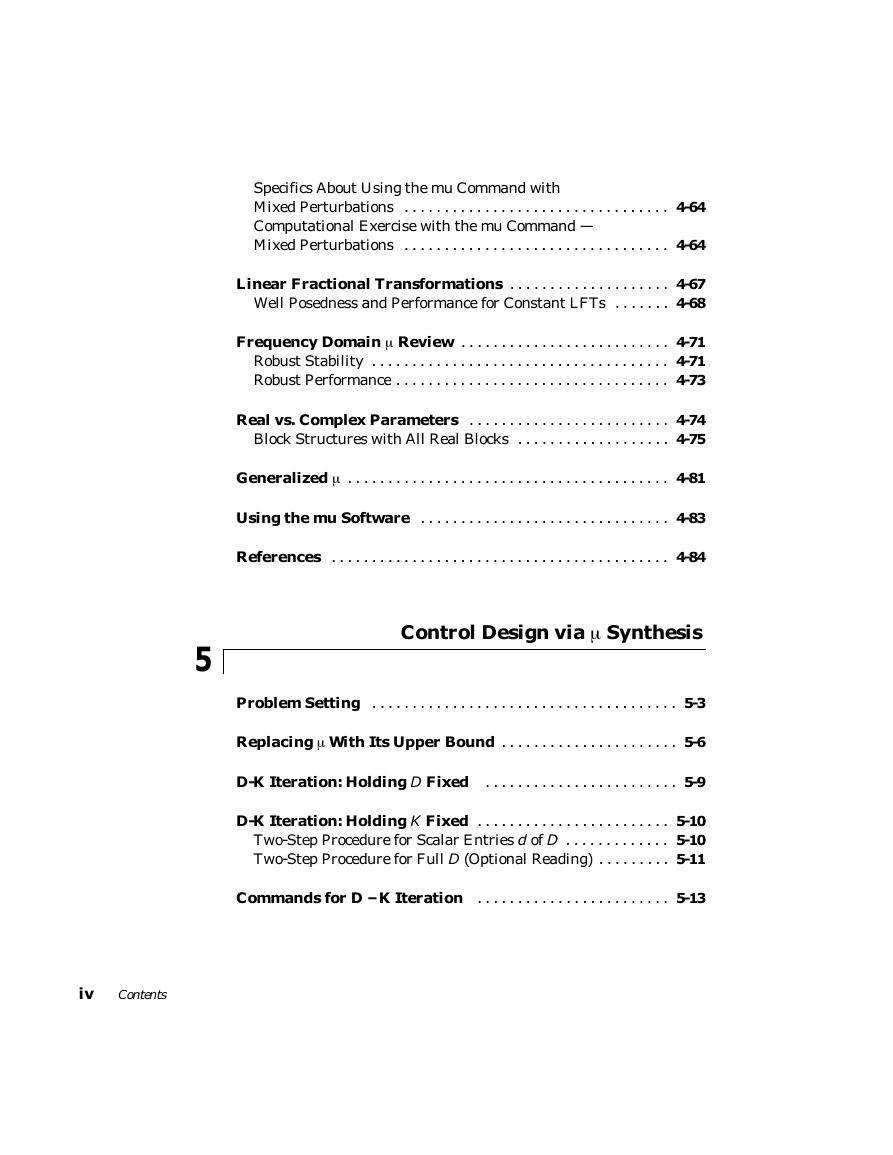
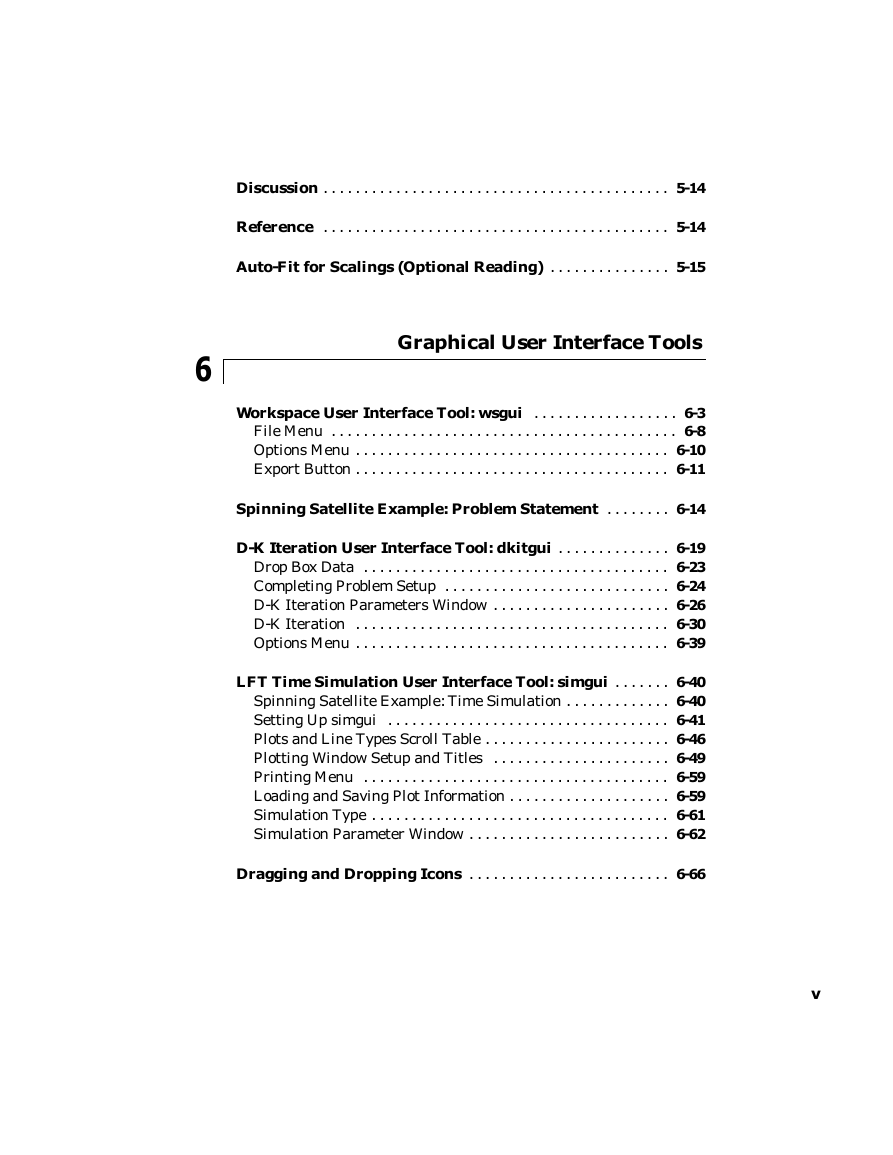
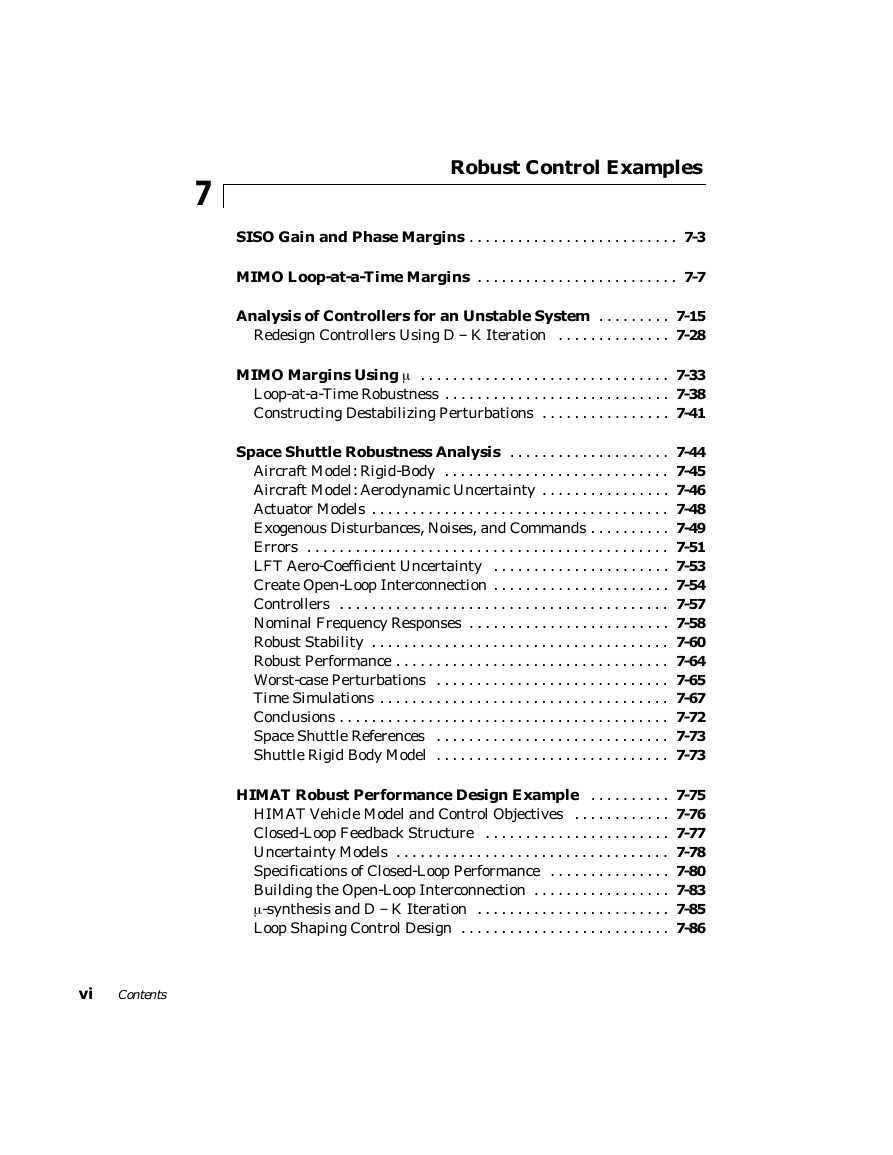








 2023年江西萍乡中考道德与法治真题及答案.doc
2023年江西萍乡中考道德与法治真题及答案.doc 2012年重庆南川中考生物真题及答案.doc
2012年重庆南川中考生物真题及答案.doc 2013年江西师范大学地理学综合及文艺理论基础考研真题.doc
2013年江西师范大学地理学综合及文艺理论基础考研真题.doc 2020年四川甘孜小升初语文真题及答案I卷.doc
2020年四川甘孜小升初语文真题及答案I卷.doc 2020年注册岩土工程师专业基础考试真题及答案.doc
2020年注册岩土工程师专业基础考试真题及答案.doc 2023-2024学年福建省厦门市九年级上学期数学月考试题及答案.doc
2023-2024学年福建省厦门市九年级上学期数学月考试题及答案.doc 2021-2022学年辽宁省沈阳市大东区九年级上学期语文期末试题及答案.doc
2021-2022学年辽宁省沈阳市大东区九年级上学期语文期末试题及答案.doc 2022-2023学年北京东城区初三第一学期物理期末试卷及答案.doc
2022-2023学年北京东城区初三第一学期物理期末试卷及答案.doc 2018上半年江西教师资格初中地理学科知识与教学能力真题及答案.doc
2018上半年江西教师资格初中地理学科知识与教学能力真题及答案.doc 2012年河北国家公务员申论考试真题及答案-省级.doc
2012年河北国家公务员申论考试真题及答案-省级.doc 2020-2021学年江苏省扬州市江都区邵樊片九年级上学期数学第一次质量检测试题及答案.doc
2020-2021学年江苏省扬州市江都区邵樊片九年级上学期数学第一次质量检测试题及答案.doc 2022下半年黑龙江教师资格证中学综合素质真题及答案.doc
2022下半年黑龙江教师资格证中学综合素质真题及答案.doc